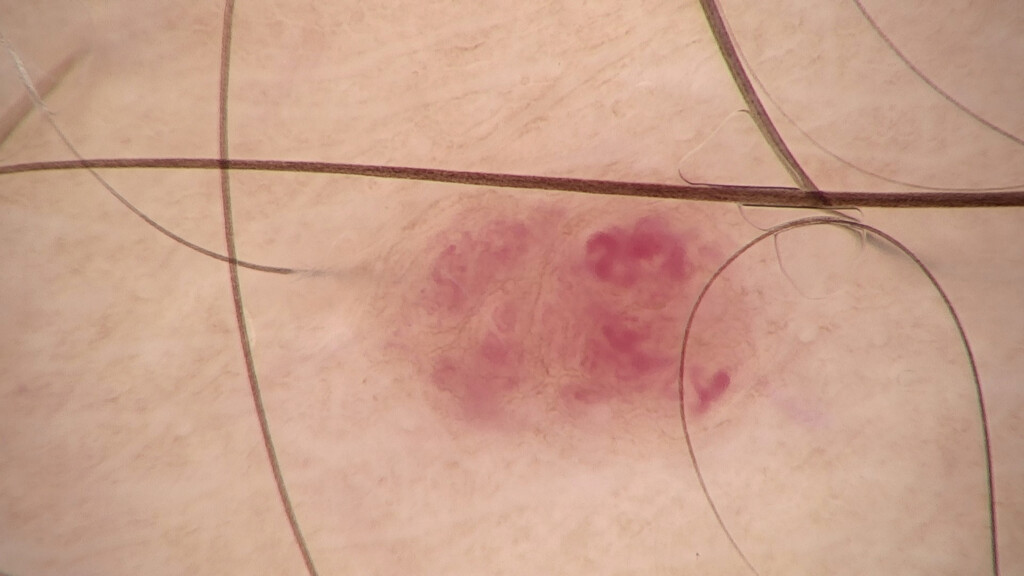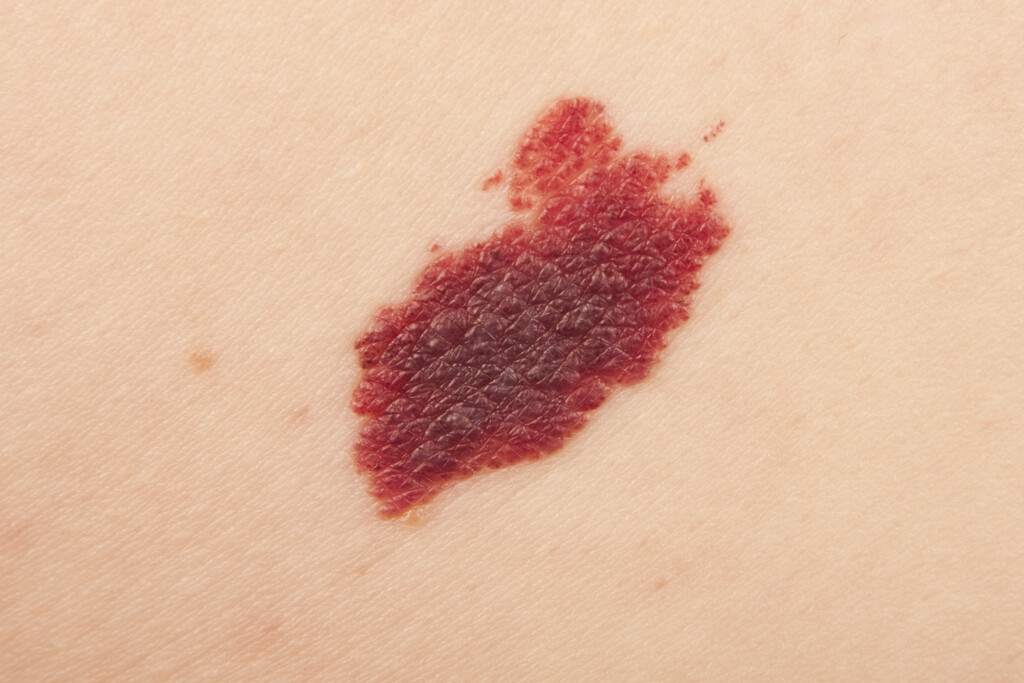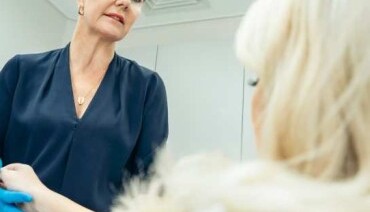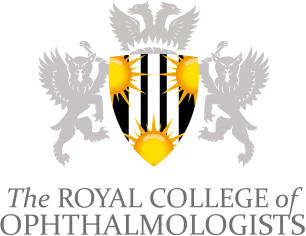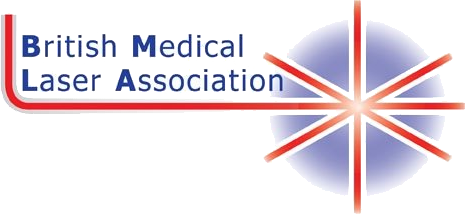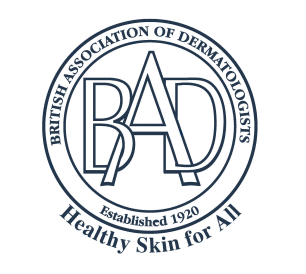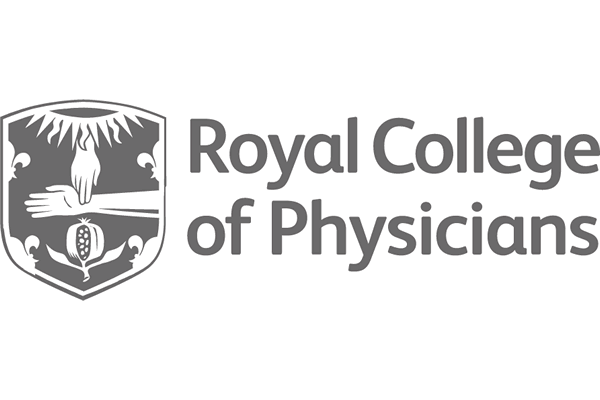There are a variety of different angiomas (also known as Campbell de Morgan spots) including cherry angiomas, angiokeratomas and spider angiomas.
Cherry angiomas present as small red lesions on the skin. They are most commonly seen on your arms, legs and around the torso however they can occur anywhere on the body. They have a bright red colour and are usually around 2-4mm in size (but can be longer). Cherry angiomas are quite common and usually occur in adults. The majority of cherry angiomas occur as people age and they are more likely to occur in those over 30 years old. cherry angiomas cannot cause any harm to those with them however they may be removed as a result of aesthetic concern. The exact cause of cherry angiomas is unknown however the development of these lesions can be linked to age and hormonal changes. Cherry angiomas can be removed using a several methods including cryotherapy or laser Treatment.
Angiokeratomas present themselves as hard lesions on the skin. They can vary in colour including blue, purple, red or black as the blood vessels join together and disrupt the skins surface creating a hard lump on the skin. Angiokeratomas are very rare and do not affect a great proportion of people. They can occur on a variety of different body parts and usually as a result of their hard nature they can cause bleeding and some scaly and dry areas of skin. Usually, angiokeratomas occur due to the tissue surrounding the capillary walls losing their elasticity which then leads to the blood vessels breaking through to the skins surface and producing the hard lesion on the skins surface. Angiokeratomas won’t disappear without treatment however they do not cause any harm and therefore the decision to remove angiokeratomas is usually cosmetic. These types of angioma can be removed using a variety of methods including cryotherapy or skin excision.
Spider angiomas (also known as Spider Nevus), present themselves as small red or purple lesions on the skin surface. The name of these angiomas comes from their appearance on the skin surface as they resemble the shape of the spider. Spider angiomas can appear in anyone and on any part of the body, they are common amongst all age groups. Spider angiomas occur as a result of widened blood vessels on the skins surface which leads to the discoloured lesion on the surface of the skin. Spider angiomas can disappear without treatment however many patients choose to have these lesions removed as a result of aesthetic and cosmetic concerns. Despite the cause of spider angiomas being the dilation of blood vessels, the reasons as to why these vessels do dilatate is unknown and therefore we do not fully understand the cause of spider angiomas. These lesions can be removed using laser therapy which is very successful to remove the lesions and satisfy any aesthetic concerns.
During an initial consultation and diagnosis, the most effective treatment will be suggested. Depending on the size of the lesion or the number of lesions on the skin, several treatments may be necessary to completely remove them.



